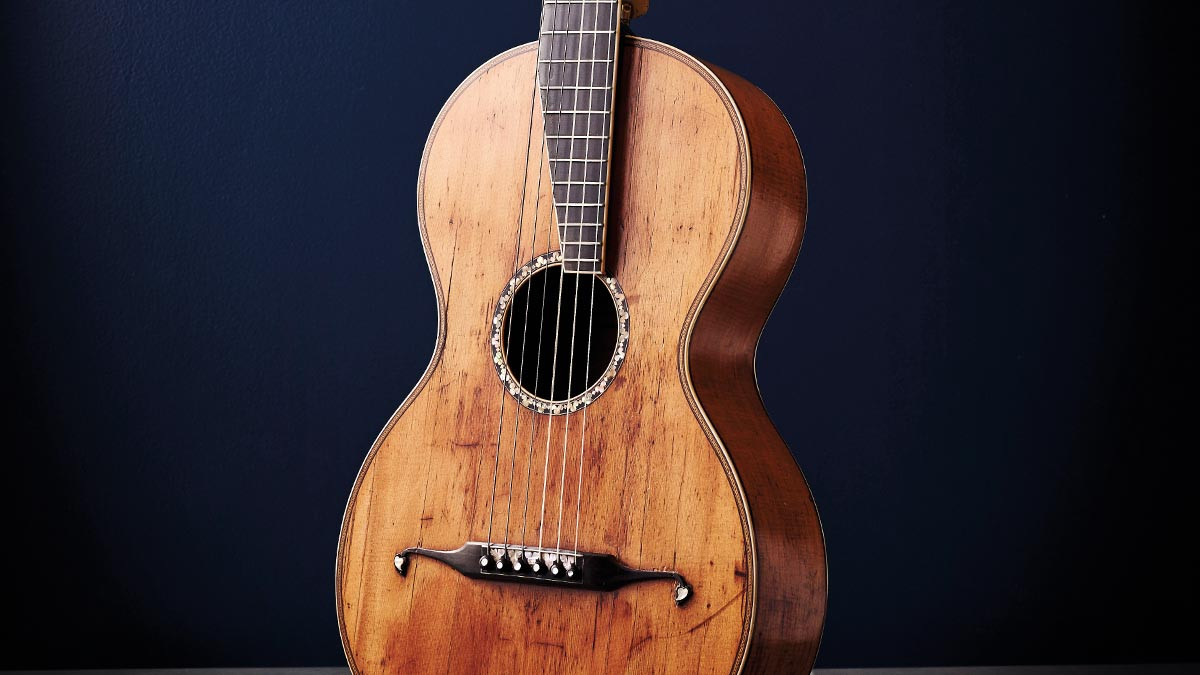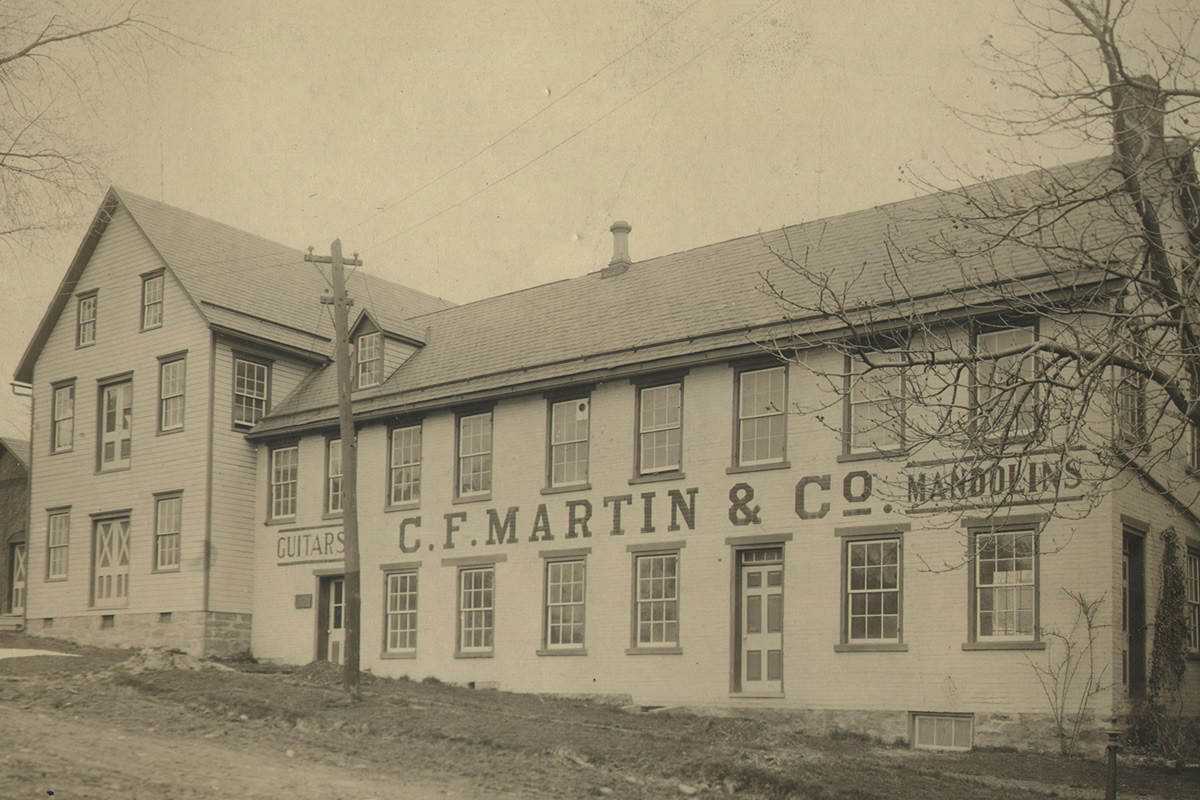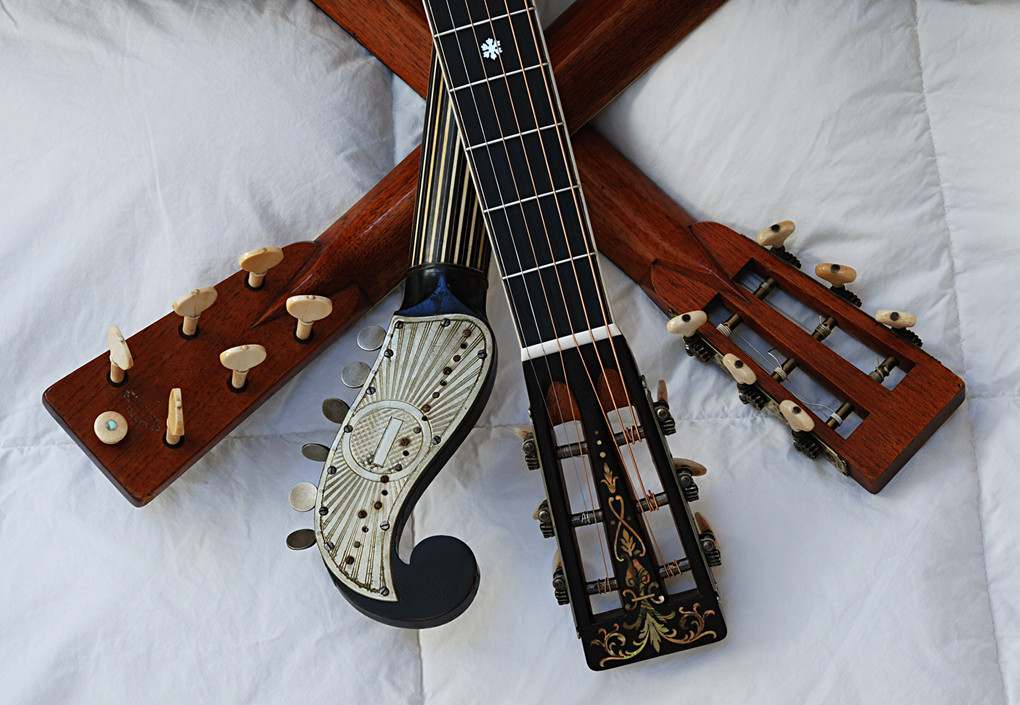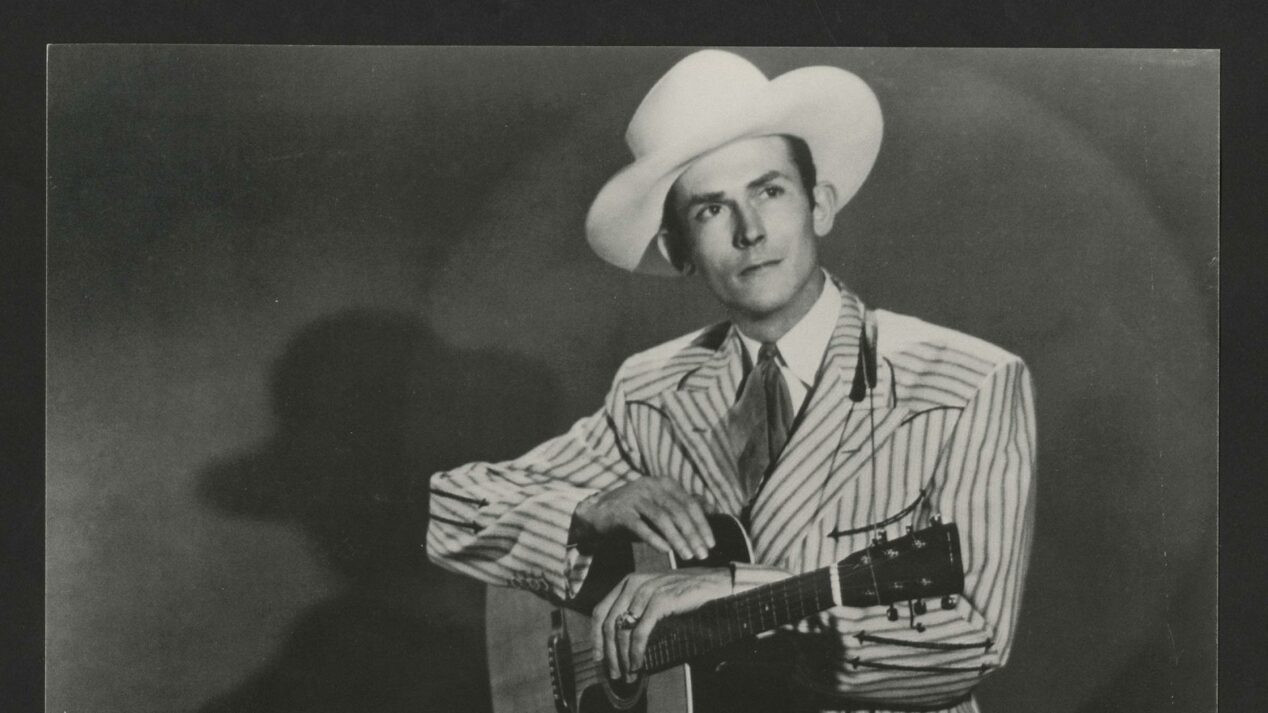C. F. Martin Guitars stands as a monumental figure in the world of musical instruments, renowned globally for producing some of the most coveted and respected guitars. For generations, their instruments have been the gold standard, favored by legendary artists from Hank Williams to Bob Dylan, shaping the sound of countless iconic recordings.
However, the journey to becoming the world’s most iconic acoustic guitar manufacturer was not an overnight success. The C.F. Martin Guitar Company boasts a rich and intricate history stretching back to the early 19th century, marked by both triumphs and tribulations. It took over a century of dedication, innovation, and unwavering commitment to quality for Martin to reach its current pinnacle, a story that resonates deeply with every guitarist and music enthusiast.
Let’s embark on a comprehensive exploration, tracing the origins of the C.F. Martin Guitar Company from its humble beginnings to its present-day status as an industry titan.
From German Roots to American Dreams: The Early Days of C.F. Martin
The narrative of the C.F. Martin Guitar Company commences in Germany, long before the company’s official establishment. Christian Frederick Martin was born in 1796 in a quaint German village, inheriting a legacy of woodworking and cabinet making from his family.
At the young age of 15, C.F. Martin embarked on an apprenticeship in Austria under the tutelage of Johann Stauffer, a distinguished guitar maker of that era. This formative period honed Martin’s skills and instilled in him a deep understanding of guitar construction. Upon completing his training, Martin returned to his homeland with a resolute ambition: to craft exceptional guitars. Yet, the path ahead was fraught with unexpected complexities.
In 19th-century Germany, craftspeople operated under a rigid guild system, where guilds fiercely protected their respective trades. The guitar, being a relatively nascent instrument, became a subject of contention. While most guitar makers, including Martin, were affiliated with the cabinet makers’ guild, the violin makers’ guild asserted their claim over guitar making, arguing that guitars, as musical instruments, fell under their domain.
This dispute escalated into a legal battle. The cabinet makers’ guild eventually prevailed, granting Martin the legal clearance to continue his guitar making endeavors. However, weary of the bureaucratic hurdles and restrictive environment, Martin sought a more conducive setting for his craft. He made the pivotal decision to immigrate to New York City, a burgeoning metropolis devoid of the stifling guild system.
 An early Martin guitar showcasing the Stauffer-influenced design with six on-a-side tuning pegs and a curved bridge.
An early Martin guitar showcasing the Stauffer-influenced design with six on-a-side tuning pegs and a curved bridge.
Establishing a Foothold in New York City
In 1833, C.F. Martin arrived in New York City, brimming with entrepreneurial spirit and determined to establish himself as a prominent guitar maker. He swiftly set up a guitar shop on Hudson Street, commencing the sale of his handcrafted instruments.
The guitars produced by Martin during this nascent period bore a distinct resemblance to those of his mentor, Johann Stauffer. These early Martin guitars featured six-on-a-side tuning pegs, a gracefully curving bridge, and a neck adjustable via a key in the heel—hallmarks of the Stauffer style.
Interestingly, many guitars from this era were sold under co-branded names. To facilitate distribution, Martin collaborated with a network of teachers and wholesalers. Consequently, numerous Martin guitars crafted before 1840 bear labels such as “Martin & Schatz” or “Martin & Coupa,” reflecting these partnerships. His primary distribution ally was Zoebisch & Sons, also based in NYC, a collaboration that endured until 1898.
Martin’s venture in NYC proved remarkably successful, perhaps exceeding his initial expectations. Struggling to keep pace with escalating demand and desiring to concentrate solely on manufacturing, Martin recognized the need for relocation. In 1839, the C.F. Martin Guitar Company officially moved to Nazareth, Pennsylvania, marking a new chapter in its history.
 The C.F. Martin Guitar factory in Nazareth, Pennsylvania, a long-standing symbol of American guitar manufacturing.
The C.F. Martin Guitar factory in Nazareth, Pennsylvania, a long-standing symbol of American guitar manufacturing.
Nazareth: Forging a Legacy in Pennsylvania
The relocation to Nazareth, a relatively small town approximately 100 miles from New York City, represented a calculated risk for C.F. Martin. He established a factory at the corner of Main and North Streets, placing his faith in the town’s potential to support his growing enterprise. Fortunately, his gamble paid off handsomely.
By 1850, the burgeoning demand for Martin guitars necessitated an expansion of the factory. Simultaneously, Martin’s guitar designs were undergoing a gradual evolution. Over time, he progressively moved away from the Stauffer-style guitars, embracing newer design concepts. Rectangular bridges and slotted pegheads became standard features, and Brazilian rosewood emerged as the preferred tonewood for backs and sides, contributing to the signature Martin sound.
As C.F. Martin entered his 70s by 1867, he recognized the need for succession planning. He brought his son, C.F. Martin Jr., into the business as a partner. Upon his father’s passing in 1873, C.F. Martin Jr. assumed leadership of the C.F. Martin Guitar Company.
Around this time, Martin implemented official model numbers to categorize their guitars. Early models included the Style 17, Style 18, and Style 27, laying the foundation for Martin’s renowned model numbering system. The company continued to flourish under C.F. Martin Jr.’s guidance, although his tenure was tragically cut short.
C.F. Martin Jr. passed away unexpectedly in 1888, leaving his 22-year-old son, Frank Henry Martin, to take the reins of the company. Shortly after assuming control, Frank Henry Martin faced a dispute with Zoebisch & Sons, their long-time distributor.
For reasons that remain unclear, Zoebisch & Sons declined to promote Martin’s newly introduced mandolins. Mandolins were enjoying considerable popularity at the time, and their sales were a significant revenue stream for Martin. However, Zoebisch & Sons exhibited reluctance in promoting them. Ultimately, Martin decided to take control of their distribution network, a pivotal decision that shaped the company’s future.
With a stable home in Nazareth, an expanded factory, youthful leadership, and control over distribution, the C.F. Martin Guitar Company was poised to enter the 20th century with renewed vigor and ambition.
 A collection of Martin headstocks showcasing the evolution of the company's logo and design aesthetics over time.
A collection of Martin headstocks showcasing the evolution of the company's logo and design aesthetics over time.
Martin Guitars in the 20th Century: Navigating a Changing Musical Landscape
At the dawn of the 20th century, the C.F. Martin Guitar Company adopted a guiding principle of “quality over quantity.” As the guitar market became increasingly competitive, with Gibson emerging as a formidable rival, Martin recognized the imperative to maintain its high standards.
However, Martin strategically avoided succumbing to fleeting trends or drastic alterations to their core designs. They doubled down on crafting high-end instruments, responding selectively to Gibson’s market moves. While this approach may not have yielded the highest sales volumes compared to some competitors, it allowed Martin to cultivate a reputation for unparalleled quality and craftsmanship, solidifying its position in the premium segment.
Ironically, ukuleles played a crucial role in Martin’s success during the early 1900s. Ukuleles were more affordable, portable, and accessible, capturing the public’s imagination. Although Martin’s initial ukuleles were positioned at the higher end of the market, they quickly adapted and introduced more accessible models, achieving phenomenal success. In the 1920s, Martin’s ukulele sales nearly doubled their guitar sales, demonstrating the company’s adaptability and market acumen.
Despite navigating economic fluctuations in the early 20th century, the C.F. Martin Guitar Company persevered. However, the challenges of the coming decades would test the company’s resilience even further.
Tumultuous Times: The Great Depression and Enduring Hardship
Like many businesses, the late 1920s and early 1930s presented formidable challenges for the C.F. Martin Guitar Company. The passing of Herbert Keller, the sales director and brother of C.F. Martin Jr., in 1927 was a significant loss. Just two years later, in 1929, the onset of the Great Depression plunged the global economy into turmoil. These combined adversities compelled Martin to prioritize survival over aggressive sales growth.
Martin’s sales plummeted by a staggering 50% between 1929 and 1931. The company was forced to implement a three-day workweek due to dwindling demand and financial constraints. To sustain operations, Martin diversified into crafting wooden jewelry and violin parts to generate revenue, demonstrating their resourcefulness in the face of adversity.
Despite the profound impact of the Great Depression, the C.F. Martin Guitar Company weathered the storm. This period of hardship would eventually pave the way for a resurgence, marked by groundbreaking innovations and renewed prosperity.
Innovation and Reinvention: 14 Frets and the Dreadnought Revolution
In 1929, a banjo player named Perry Bechtel inadvertently set in motion a transformation that would redefine the C.F. Martin Guitar Company and the landscape of acoustic guitars. At the time, Martin guitars typically had 12 frets before the neck joined the body. Bechtel, accustomed to his banjo’s 15 frets, challenged Martin to extend the fretboard on their guitars.
This challenge spurred the creation of the 14-fret Orchestral Model (OM), initially conceived to replace the banjo in jazz ensembles. The 14-fret design proved to be a resounding success, so much so that it was adopted across all Martin models and eventually became the industry standard for American acoustic guitars. Many consider the OM to be the first truly modern acoustic guitar and one of Martin’s most significant contributions to musical instrument design.
Around the same time, Martin embraced another transformative design: the dreadnought. Dreadnought guitars had existed since 1916, but Martin fully integrated them into their product line in 1931. Fortuitously for Martin, the timing aligned perfectly with evolving musical tastes.
While electric guitars were gaining traction in the 1930s, the acoustic guitar realm was experiencing a quieter evolution. However, a burgeoning resurgence of interest in folk music provided fertile ground for the dreadnought’s ascendance. Country music was also gaining mainstream popularity, and the powerful, resonant voice of the Martin dreadnought quickly became an integral part of the era’s country sound.
Country music icon Gene Autry famously wielded a Martin D-45, setting a precedent for other country artists. Ernest Tubb, Hank Williams, Red Foley, Lester Flatt, and numerous others embraced Martin guitars as their instruments of choice. This widespread adoption among influential musicians cemented Martin’s status as a premier brand in the acoustic guitar world.
However, the C.F. Martin Guitar Company was yet to reach its zenith. World War Two imposed limitations on Martin’s production capacity and access to materials. To maintain operations, the company implemented strategic adjustments, such as discontinuing herringbone wood marquetry and scalloped bracing, demonstrating their adaptability amidst wartime constraints. Soon after the war, Martin was poised for its most prosperous era yet.
 Hank Williams, a legendary country musician, with his Martin guitar, illustrating the brand's deep connection to American music history.
Hank Williams, a legendary country musician, with his Martin guitar, illustrating the brand's deep connection to American music history.
The Folk Revival and the Martin Boom: A Golden Era
The post-war period marked a transformative chapter for the C.F. Martin Guitar Company. Frank Martin’s passing in 1948 ushered in a new generation of leadership, with C.F. Martin III assuming control and steering the company towards unprecedented growth.
The 1950s witnessed a surge in popularity of folk music, known as the folk revival. With countless individuals taking up the guitar to explore folk music, Martin guitars emerged as the instrument of choice for aspiring and established folk musicians alike. This cultural phenomenon fueled a massive surge in demand for Martin guitars.
While the folk boom was immensely beneficial for Martin, it also presented challenges. C.F. Martin III grew concerned about the extended production delays caused by limited capacity, fearing potential customer attrition. To address this, he spearheaded the construction of a new 62,000-square-foot facility in 1962, designed to meet the escalating demand and streamline production.
By the late 1960s, owning a Martin guitar had become virtually synonymous with professional singer-songwriters. It was almost an unspoken expectation within the music industry. Martin guitars were the quintessential acoustic guitars, and any musician aspiring to a professional acoustic career typically owned one.
To illustrate the scale of this growth, consider that 507 dreadnoughts were sold in 1961. By 1971, that number had skyrocketed to 5,466. In 1971 alone, Martin produced 22,637 guitars, a staggering figure compared to previous years, underscoring the profound impact of the folk revival on the company’s fortunes.
Throughout the 1970s, the C.F. Martin Guitar Company continued its upward trajectory. They expanded their portfolio by acquiring other brands and diversifying into related musical instrument categories, such as strings, banjos, and drums. They even introduced a budget-friendly line of foreign-made guitars known as Sigma, catering to a wider range of musicians.
By the close of the 1970s, the C.F. Martin Guitar Company stood at the pinnacle of the acoustic guitar world. They had further expanded their facilities, achieved record-breaking sales, and experienced a level of success that the original C.F. Martin could scarcely have imagined.
MTV Unplugged and C.F. Martin IV: Entering a New Era
The 1980s largely represented a continuation of Martin’s established success. They maintained consistent guitar production and robust sales. While they experimented slightly with more flamboyant guitar designs, Martin largely adhered to their core principles of quality and craftsmanship.
However, 1986 marked a significant transition with the passing of C.F. Martin III. His grandson, C.F. Martin IV, assumed leadership of the company, continuing the family legacy. C.F. Martin IV, like his predecessors, was determined to guide Martin into a new era of growth and innovation.
The 1990s proved to be an unexpectedly favorable decade for Martin. The advent of MTV Unplugged, a television series showcasing acoustic performances, ignited a renewed interest in acoustic guitars among a new generation of musicians and enthusiasts, many of whom might not have previously considered acoustic instruments. Iconic performances by artists like Eric Clapton and Kurt Cobain, both playing Martin guitars, undoubtedly fueled a surge in sales and brand recognition.
With the 1990s behind them, C.F. Martin IV prepared to lead the C.F. Martin Guitar Company into the new millennium, balancing tradition with contemporary innovation.
Modern Martin: Tradition Meets Innovation
Since the 2000s, the C.F. Martin Guitar Company has adeptly navigated the delicate balance between honoring its rich heritage and embracing modern advancements. They continue to produce the classic Martin guitars that enthusiasts have come to expect, utilizing many of the time-honored methods and techniques. Simultaneously, they have actively pursued expansion and incorporated cutting-edge technology into their manufacturing processes.
For example, the Martin X series, introduced in 1998, utilizes HPL (high-pressure laminate) tops and richlite fingerboards. This innovation enabled Martin to offer more affordable guitars without compromising sound quality, broadening their accessibility to a wider range of players.
A more recent innovation is the Martin Vintage Tone System (VTS), a proprietary process designed to replicate the sonic characteristics and playing feel of highly sought-after pre-war Martin guitars. This demonstrates Martin’s commitment to both innovation and preserving the essence of their vintage instruments.
Martin has also undertaken numerous factory expansions, including a dedicated facility for string production, further integrating their manufacturing capabilities. To meet global demand and optimize production costs, Martin has also established production facilities in Mexico, producing models like the D10E. This particular model exemplifies Martin’s commitment to sustainability, utilizing sapele, a tonewood with similar acoustic properties to mahogany but sourced from more sustainable forests.
Under C.F. Martin IV’s leadership, the C.F. Martin Guitar Company has consistently explored new ideas, manufacturing techniques, and design concepts. This proactive approach has solidified their position at the forefront of the acoustic guitar industry. With their classic Martin models remaining central to their lineup, the C.F. Martin Guitar Company shows no signs of relinquishing its leadership position anytime soon.
C.F. Martin: An Enduring American Success Story
While the name C.F. Martin Guitars is universally recognized, the company’s intricate history is less widely known. From navigating guild disputes in Germany and C.F. Martin’s initial workshop to numerous expansions and leadership transitions, the C.F. Martin Guitar Company’s journey embodies a classic American success story: a testament to perseverance, innovation, and unwavering dedication to quality.
The next time you pick up a Martin guitar or listen to a recording featuring one, take a moment to reflect on the company’s rich heritage and the remarkable journey behind its creation. You may find yourself with a deeper appreciation for C.F. Martin, their exceptional instruments, and their enduring legacy in the world of music.
